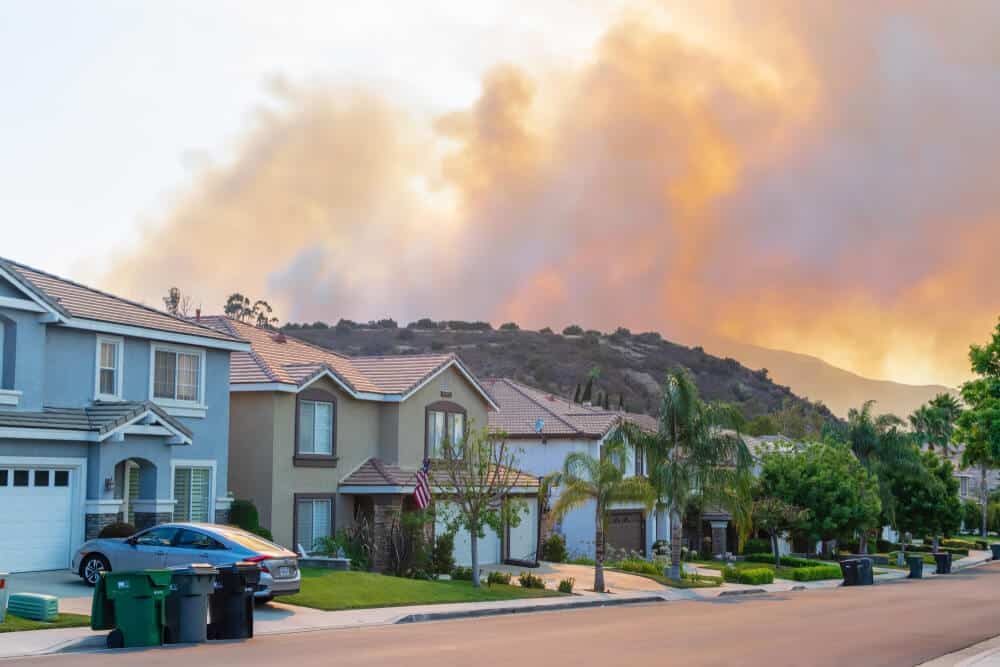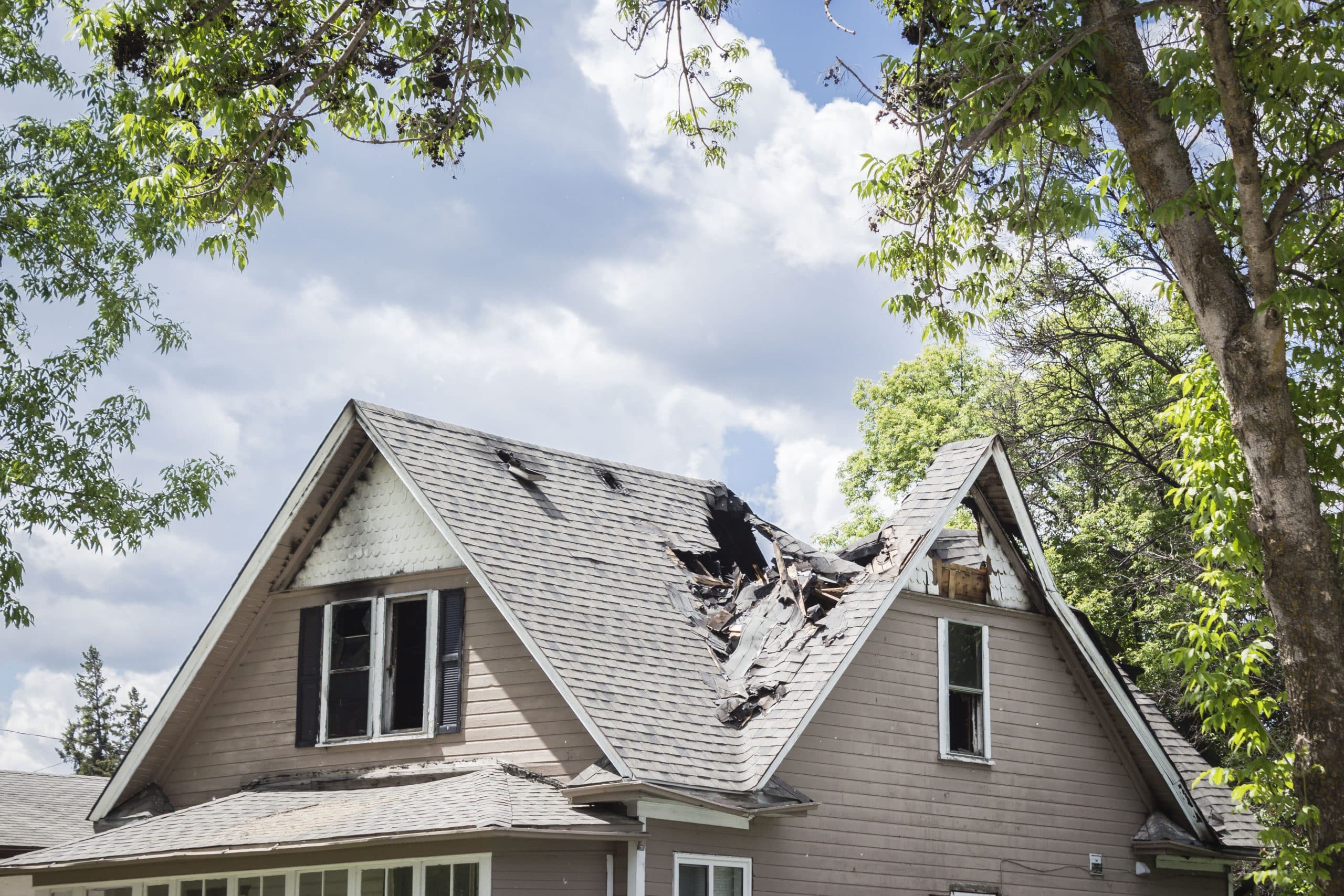Leading Causes of House Fires

House fires can have devastating consequences for homeowners, ranging from property damage to severe burn injuries and even wrongful death. Fires can be physically, mentally, and financially traumatizing.
Understanding the most common household fire risks and how to prevent them can help keep your home and loved ones safe. However, if you or a loved one have been injured in a house fire due to the negligence of another party, seek legal representation to recover compensation for your losses.
At Spaulding Injury Law, our team has years of experience representing clients in personal injury cases. With our knowledge of Georgia law and commitment to client advocacy, we can help you fight for the compensation you deserve. Keep reading to learn more about the most common causes of household fires and how Spaulding Injury Law can help you.
Cooking
Cooking-related fires are a serious hazard in residential homes, with approximately 44 percent of all house fires starting in the kitchen or cooking area. The cause of these fires is usually the result of cooking food being left unattended, which can quickly escalate into a major fire.
Another common cause of kitchen fires is a buildup of grease and oil, which can ignite if it comes into contact with an open flame. This is especially common for range hoods and exhaust fans, which can collect grease over time and pose a significant fire risk. To prevent these types of fires, regularly clean and maintain kitchen appliances and surfaces, including stovetops and oven hoods, to minimize grease and oil buildup.
Additionally, be mindful of the types of materials that are placed near cooking appliances. Paper towels, kitchen towels, and other flammable items should be kept away from heat sources to prevent accidental fires.
To prevent kitchen fires, every kitchen should have a fire extinguisher easily accessible in case of an emergency. Smoke detectors and carbon monoxide detectors should also be installed and tested regularly to ensure they are functioning properly.
Defective Wiring
Faulty wiring is another one of the leading causes of fires in homes.
Several warning signs may indicate faulty wiring in a home, including blown fuses, circuit breakers that frequently trip, flickering or dimming lights when appliances are in use, and sparks from electrical outlets. If any of these signs are present, contact an electrician to inspect the wiring and circuit breaker and identify any potential hazards.
If you are a tenant and notice signs of faulty wiring, notify your landlord or property manager right away. Landlords are legally responsible for maintaining safe living conditions for their tenants, including ensuring that the electrical system is up to code and functioning properly.
If a fire happens due to faulty wiring that the landlord failed to correct, the landlord may be liable for damage to your personal property, as well as any injuries sustained by you or your guests. In some cases, the landlord may also be liable for the cost of relocating you to a new home if the fire renders the rental property uninhabitable.
Homeowners and landlords can also take proactive steps to prevent fires caused by faulty wiring by having the wiring inspected by a qualified electrician regularly, avoiding overloading outlets and circuits, and not using electrical devices that are damaged or in need of repair. It is also a good idea to install smoke detectors and carbon monoxide detectors throughout the home and to test them regularly to ensure that they are working properly.
Smoking
Smoking remains a leading cause of house fires, causing thousands of incidents each year.
House fires can easily start from a dropped cigarette, leading to damage to property and even loss of life.
Improper disposal of smoking materials can also cause house fires. Flicking cigarette butts into a trash can or not fully extinguishing cigarettes before throwing them away can create a dangerous situation if the materials come into contact with paper, fabric, or dry leaves.
Smoking in bed is another major cause of house fires. When a smoker falls asleep with a lit cigarette, the cigarette can fall out of their hand or onto the bed, causing the mattress and bedding to catch on fire.
Also, many people may not be aware that electronic cigarettes and vaping devices can also pose a fire risk. The lithium-ion batteries in these devices can sometimes overheat or malfunction, leading to explosions or fires.
To reduce the risk of house fires caused by smoking materials, the National Fire Protection Association (NFPA) recommends smoking outside the home and disposing of cigarette butts and ashes in a sturdy, non-combustible container filled with sand or water.
Household Appliances
Appliances like dishwashers, refrigerators, ovens, and washing machines can start house fires.
While defective appliances can cause sparks and ignite fires, appliance fires can also be caused by leaving appliances unattended or misusing them.
For example, a washing machine or dryer can catch fire if the lint filter is not cleaned out regularly. Dust, lint, and other debris can accumulate in the filter, which can ignite a fire. Similarly, a dishwasher can start a fire if flammable items, such as plastic containers or paper, are placed too close to the heating element.
Leaving appliances unattended, such as leaving the oven on while leaving the house or leaving a toaster unattended while in use, can lead to a fire if the bread gets stuck or if the toaster is defective. can also lead to appliance fires.
Other common causes of appliance fires include:
- Overloading electrical outlets or extension cords.
- Using damaged or frayed cords.
- Using appliances with incompatible voltage ratings.
Candles
Candles are one of the leading causes of house fires in the United States. Most candle fires are the result of negligence, such as leaving a candle burning unattended or placing a candle too close to flammable materials.
A candle fire caused by negligence could involve a person lighting a candle on a tablecloth, forgetting about it, and leaving the room. The tablecloth could catch fire, and the fire could quickly spread to the rest of the room, causing extensive damage to the property and possibly injuring people or pets who are unable to escape in time. In this case, the person who lit the candle and left it unattended could be held liable for the damages caused by the fire, especially if they failed to take reasonable precautions to prevent the fire from happening, such as not placing the candle on a heat-resistant surface or trimming the wick to a safe length.
Trimming the wick of a candle to 1/4 inch before lighting it can also help reduce the risk of fire, as it prevents the wick from getting too long and causing the flame to become too large.
Electric and battery-operated candles can also be a safer alternative to traditional candles, as they do not produce an open flame and are less likely to cause a fire.
To reduce the risk of fires caused by candles, practice safe candle usage by never leaving a burning candle unattended, keeping candles away from flammable materials such as curtains, bedding, or paper products, and placing candles on a sturdy, heat-resistant surface.
Christmas Trees
Dry needles, combined with heat, create a dangerous environment that can quickly escalate into a full-blown fire.
One of the most common causes of Christmas tree fires is a lack of watering. When trees do not receive enough water, the needles start to dry out, making the tree more susceptible to catching fire if placed near a fireplace or space heater. Both real and artificial trees can catch on fire, so make sure your tree is a safe distance from any source of heat.
Leaving Christmas tree lights turned on when going to bed or leaving the house can also cause a fire. Lights left turned on for an extended period can cause the tree to overheat, which can ignite a fire. Therefore, it is recommended to turn off the lights when leaving the room or going to bed.
Heaters
Space heaters can also cause fires if they fall over after being placed on an unstable surface or if their cords are frayed or damaged. Using space heaters in well-ventilated areas helps to reduce the risk of combustion or carbon monoxide poisoning, which can be fatal.
Fireplaces can also be a common source of heating equipment fires. The buildup of creosote, a highly flammable and sticky substance that is formed when wood or other organic matter is burned, can build up on the inside of chimney walls, especially if the fire is not hot enough or if the chimney is not properly ventilated.
Some homeowners may use accelerants to help start fires in their fireplaces, which can quickly get out of control and cause a fire. To prevent this, only burn wood or other approved materials in fireplaces and never burn trash or other materials that could release harmful chemicals into the air.
Furnaces can also be a cause of house fires if they are not properly maintained or if there are defects in their design. Failure to maintain the furnace through regular maintenance, such as changing filters, inspecting the burners, checking for any leaks or cracks, and ensuring proper ventilation, can lead to the accumulation of dust and debris, which can ignite and cause a fire.
Proper installation by trained professionals of the furnace is also critical to ensure a furnace’s safe operation. If a furnace is not installed correctly or if there are defects in its design, for example, if the furnace is installed too close to combustible materials or if there are issues with the electrical wiring, it can result in a fire.
Homeowners should also be aware of the signs of furnace malfunction, such as strange noises or odors, and should contact a professional if they suspect a problem.
How to Take Safety Precautions
Many fires can be prevented by taking basic fire safety and prevention measures.
Having fire extinguishers in easily accessible locations, such as in the kitchen, garage, and near any heating equipment, can help extinguish a small fire before it spreads.
Smoke alarms and carbon monoxide detectors should be installed throughout your home to alert you of any potential danger. Smoke alarms should be installed in every bedroom, outside each sleeping area, and on every level of the home, including the basement. Carbon monoxide detectors should be installed near each sleeping area and on every level of the home, including the basement.
Staying in the kitchen while cooking. It’s easy to get distracted, but never leave the kitchen when cooking with heat, especially when frying, broiling, or grilling food. If you must leave the kitchen, turn off the heat or ask someone to watch the food for you.
Have a fire escape plan and practice it regularly with your family to help everyone in the household know what to do in case of a fire. Identify exits and escape routes, designate a meeting place outside the home, and know how to call emergency services. Practicing the plan periodically helps everyone become familiar with the plan and helps ensure that everyone can evacuate the home quickly and safely if a fire breaks out.
In the event of a fire, every second counts, and a well-practiced fire escape plan can help save lives.
Contact Spaulding Injury Law for House Fire Recovery
According to the National Fire Protection Association’s report on U.S. Structure Fires, someone dies from a house fire every 144 minutes, and a person is injured every 35 minutes as a result of a civilian fire.
Spaulding Injury Law understands the devastation that can result from one of these house fires. Our lead lawyer, Ted Spaulding, with over 15 years of experience in Georgia law, can help you seek compensation if you or a loved one has suffered harm due to a fire caused by someone else’s negligence. Contact us today for a free case consultation and start the process of getting the compensation you deserve for your injuries.

When you become our client at Spaulding Injury Law, you’ll be represented by a thoroughly experienced Atlanta personal injury attorney like Theodore A. Spaulding. For over 15 years, Mr. Spaulding has helped victims of negligence across the state of Georgia resolve personal injury cases, and he’s received a remarkable number of awards and honors from the legal community recognizing his commitment to clients and to the metro-Atlanta area.
Mr. Spaulding has been named one of the Top 100 trial lawyers in Georgia by the National Trial Lawyers for six successive years.
He is honored as a lifetime member of the Million Dollar Advocates Forum ® by the Top Trial Lawyers in America ®.
Charter Member of the Distinguished Justice Advocates.
Member of the Atlanta Bar Association.


















